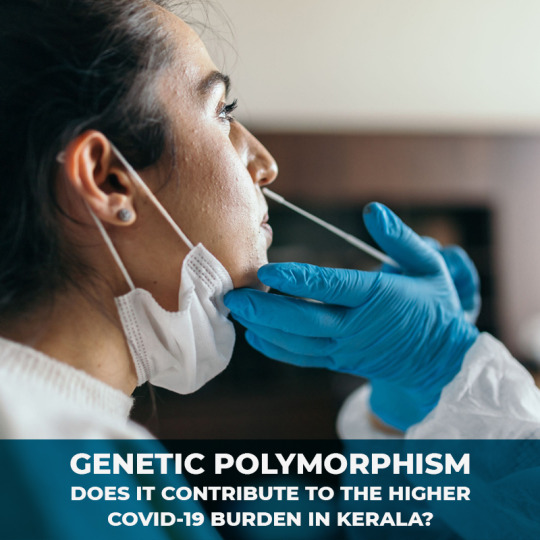#geneticpolymorphism
Explore tagged Tumblr posts
Text
Abstract Tandemly arranged repetitive regions (repeats) that encode 5S rRNA (5S rDNA) are an indispensable component of eukaryotic genomes. Typically, 5S rDNA repeats within a genome are very similar due to the concerted nature of the evolution of this type of repeats. Each 5S rDNA repeat consists of an evolutionarily conserved coding sequence (CDS) and a variable intergenic spacer (IGS). 5S rDNA is a popular model for studying the molecular evolution of repetitive sequences, and the high rate of IGS mutations determines its wide use in phylogenetic analysis of closely related taxa. Nevertheless, 5S rDNA remains unexplored for many groups of higher plants, especially for the Plumbaginaceae family. Some taxa of this family are endemic to southern Ukraine and listed in the Red Book. However, their taxonomic status is controversial, and its clarification requires the use of molecular phylogenetic methods. In this work, we examined the molecular organization of 5S rDNA for representatives of four genera of the tribe Limonieae, the largest in the family Plumbaginaceae. It was shown that the CDS of 5S rDNA of representatives of the genera Limonium, Armeria, and Ceratolimon possess single mutations that do not affect the formation of the secondary structure of 5S rRNA. In contrast, in the genomes of Goniolimon species, in addition to functionally normal 5S rDNA repeats, numerous pseudogenes were found that do not evolve in a concerted manner and contain numerous mutations in the CDS that disrupt the secondary structure of 5S rRNA. A significant phylogenetic distance between representatives of the subgenera Pteroclados and Limonium of the genus Limonium indicates that Pteroclados can be considered a separate genus. The high rate of molecular evolution makes 5S rDNA IGS a convenient tool for the reconstruction of phylogenetic relationships within the studied genera of the tribe Limonieae and the barcoding of Ukrainian endemics of the genus Limonium.
Keywords: 5S rDNA genetic polymorphism molecular evolution and phylogeny repetitive sequences pseudogenes Armeria Ceratolimon Goniolimon Limonium
#5SrDNA#geneticpolymorphism#molecularevolutionandphylogeny#repetitivesequences#pseudogenes#Armeria#Ceratolimon#Goniolimon#Limonium
0 notes
Photo

GENETIC POLYMORPHISM (SUSCEPTIBLE MUTATIONS), DOES IT CONTRIBUTE TO THE HIGHER COVID-19 BURDEN IN KERALA?As everybody knows, Kerala is the diabetes capital (<20%) of India & concomitantly, we have highest number of cardiovascular (CVS) deaths too (16%).
https://www.agappe.com/in/blog-details/227
0 notes
Text
Abstract The genus Muscari Mill. (Asparagaceae Juss.) includes about 80 species distributed in Eurasia, mainly in the Mediterranean region. Recent molecular phylogenetic studies have shown that the taxa belonging to this group form a monophyletic clade and are closely related. However, the phylogeny and status of some taxa of Muscari sensu lato remain controversial. So far, most phylogenetic studies of the genus Muscari have used almost exclusively Mediterranean plant material, while representatives of the genus from the Carpathian region remain unexplored. In this work, we used the sequencing of three regions of chloroplast DNA, psbA-trnH, trnT-L, and trnL-F, to clarify the phylogenetic relationships in the genus Muscari, to assess the genetic polymorphism and taxonomic status of Ukrainian populations of M. botryoides, as well as specimens of other Muscari species from the Carpathian region. According to the results of the phylogenetic analysis, the genus Muscari is a monophyletic group that includes three subgenera: Muscari, Muscarimia, and Pseudomuscari. Leopoldia species have been placed in the subgenus Muscari. Specimens of M. botryoides from Ukraine and Austria together with M. transsilvanicum from Romania and M. serpentinicum/M. sandrasicum from Turkey form the clade “Botryoides”, one of the three main clades identified in the subgenus Muscari. A significant genetic distance between Ukrainian specimens of M. botryoides, specimens of this species from other habitats, and other species of the genus Muscari allows us to consider the Ukrainian specimens of M. botryoides as a new, previously undescribed species. A comparison of the sequences of the investigated regions of the chloroplast genome revealed genetic differences between two groups of Ukrainian populations of M. botryoides, which can be interpreted as the existence of two intraspecific forms.
#geneticpolymorphism#molecularphylogeny#chloroplastDNA#psbAtrnH#trnTL#trnLF#Hyacinthinae#Muscaribotryoides
0 notes